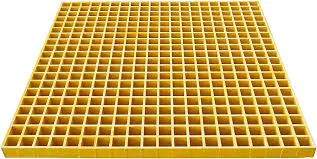
-
 Afrikaans
Afrikaans -
 Albanian
Albanian -
 Amharic
Amharic -
 Arabic
Arabic -
 Armenian
Armenian -
 Azerbaijani
Azerbaijani -
 Basque
Basque -
 Belarusian
Belarusian -
 Bengali
Bengali -
 Bosnian
Bosnian -
 Bulgarian
Bulgarian -
 Catalan
Catalan -
 Cebuano
Cebuano -
 China
China -
 China (Taiwan)
China (Taiwan) -
 Corsican
Corsican -
 Croatian
Croatian -
 Czech
Czech -
 Danish
Danish -
 Dutch
Dutch -
 English
English -
 Esperanto
Esperanto -
 Estonian
Estonian -
 Finnish
Finnish -
 French
French -
 Frisian
Frisian -
 Galician
Galician -
 Georgian
Georgian -
 German
German -
 Greek
Greek -
 Gujarati
Gujarati -
 Haitian Creole
Haitian Creole -
 hausa
hausa -
 hawaiian
hawaiian -
 Hebrew
Hebrew -
 Hindi
Hindi -
 Miao
Miao -
 Hungarian
Hungarian -
 Icelandic
Icelandic -
 igbo
igbo -
 Indonesian
Indonesian -
 irish
irish -
 Italian
Italian -
 Japanese
Japanese -
 Javanese
Javanese -
 Kannada
Kannada -
 kazakh
kazakh -
 Khmer
Khmer -
 Rwandese
Rwandese -
 Korean
Korean -
 Kurdish
Kurdish -
 Kyrgyz
Kyrgyz -
 Lao
Lao -
 Latin
Latin -
 Latvian
Latvian -
 Lithuanian
Lithuanian -
 Luxembourgish
Luxembourgish -
 Macedonian
Macedonian -
 Malgashi
Malgashi -
 Malay
Malay -
 Malayalam
Malayalam -
 Maltese
Maltese -
 Maori
Maori -
 Marathi
Marathi -
 Mongolian
Mongolian -
 Myanmar
Myanmar -
 Nepali
Nepali -
 Norwegian
Norwegian -
 Norwegian
Norwegian -
 Occitan
Occitan -
 Pashto
Pashto -
 Persian
Persian -
 Polish
Polish -
 Portuguese
Portuguese -
 Punjabi
Punjabi -
 Romanian
Romanian -
 Russian
Russian -
 Samoan
Samoan -
 Scottish Gaelic
Scottish Gaelic -
 Serbian
Serbian -
 Sesotho
Sesotho -
 Shona
Shona -
 Sindhi
Sindhi -
 Sinhala
Sinhala -
 Slovak
Slovak -
 Slovenian
Slovenian -
 Somali
Somali -
 Spanish
Spanish -
 Sundanese
Sundanese -
 Swahili
Swahili -
 Swedish
Swedish -
 Tagalog
Tagalog -
 Tajik
Tajik -
 Tamil
Tamil -
 Tatar
Tatar -
 Telugu
Telugu -
 Thai
Thai -
 Turkish
Turkish -
 Turkmen
Turkmen -
 Ukrainian
Ukrainian -
 Urdu
Urdu -
 Uighur
Uighur -
 Uzbek
Uzbek -
 Vietnamese
Vietnamese -
 Welsh
Welsh -
 Bantu
Bantu -
 Yiddish
Yiddish -
 Yoruba
Yoruba -
 Zulu
Zulu
Understanding FRP Flanges and Blinds for Industrial Applications and Benefits
Understanding FRP Flanges and Blinds Applications and Benefits
Fiber Reinforced Plastic (FRP) technology has revolutionized various industries by providing lightweight, corrosion-resistant, and durable materials. Among the key components in FRP applications are flanges and blinds. These components play a crucial role in piping systems, especially in environments that involve harsh chemicals or extreme conditions.
What are FRP Flanges?
FRP flanges are flat pieces used to connect two sections of piping or other equipment with a bolted connection. They are designed to fit seamlessly with standard pipe fittings, allowing for ease of assembly while maintaining structural integrity. The primary advantage of using FRP flanges lies in their resistance to corrosion. Traditional metal flanges often succumb to rust and degradation when exposed to harsh chemicals. In contrast, FRP flanges retain their integrity and performance over time, significantly reducing maintenance costs and downtime.
Furthermore, FRP flanges are lightweight compared to their metal counterparts. This characteristic simplifies installation and transportation, making them ideal for use in applications where weight savings are critical. Additionally, the manufacturing process of FRP allows for the production of customized shapes and sizes, accommodating specific project requirements without compromising strength or performance.
What are FRP Blinds?
FRP blinds, often referred to as blank flanges, are similar to regular flanges but are used to seal off the end of a piping system. They serve as a barrier, preventing leaks or the entry of foreign substances into the pipeline. Blinds are crucial during maintenance or when sections of piping need to be temporarily closed off. By utilizing FRP blinds, facilities ensure that the integrity of their systems remains intact, even in challenging environments.
Just like FRP flanges, blinds benefit from the material's lightweight nature and resistance to corrosion, making them a preferred choice in various sectors, including chemical processing, water treatment, and oil and gas. The ability to withstand high pressures and temperatures enhances their appeal in industrial applications where safety is paramount.
Advantages of FRP Flanges and Blinds
1. Corrosion Resistance One of the most significant advantages is their resistance to chemical corrosion. This makes FRP flanges and blinds suitable for use in industries where exposure to aggressive substances is common.
frp flange and blind

2. Light Weight The lightweight nature of FRP allows for easier handling and installation compared to traditional metal components. This is especially beneficial in large projects where many flanges and blinds are required.
3. Low Thermal Conductivity FRP materials also exhibit low thermal conductivity, minimizing heat loss in piping systems and ensuring operational efficiency.
4. Cost-Effectiveness Although the initial investment in FRP components might be higher than that of metal, the long-term savings in maintenance and replacement due to their durability can prove to be more cost-effective over time.
5. Customizability The manufacturing process allows for a range of custom designs, enabling engineers and designers to tailor components specifically for unique applications.
Applications of FRP Flanges and Blinds
FRP flanges and blinds find applications in various fields, including
- Chemical Processing In industries where hazardous chemicals are transported, the chemical resistance of FRP ensures safety and compliance with regulations. - Water Treatment Their ability to withstand high water flow rates and chemical treatments makes them ideal for use in municipal and industrial water systems. - Oil and Gas The durability and high strength of FRP flanges and blinds make them suitable for offshore platforms and pipelines, where exposure to harsh weather and corrosive environments is a concern.
Conclusion
In conclusion, FRP flanges and blinds represent a significant advancement in piping technology. Their unique properties provide a reliable, efficient, and cost-effective solution for many industrial applications. As industries continue to evolve and seek materials that can withstand the rigors of their environments, FRP technology stands out as an innovative alternative to traditional materials. Adopting FRP flanges and blinds can lead to enhanced operational efficiency, reduced maintenance costs, and improved safety in complex piping systems.









